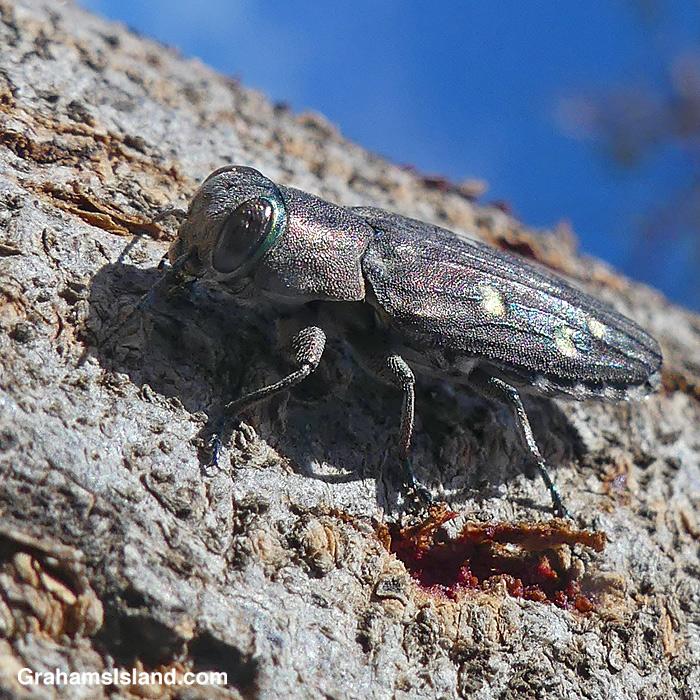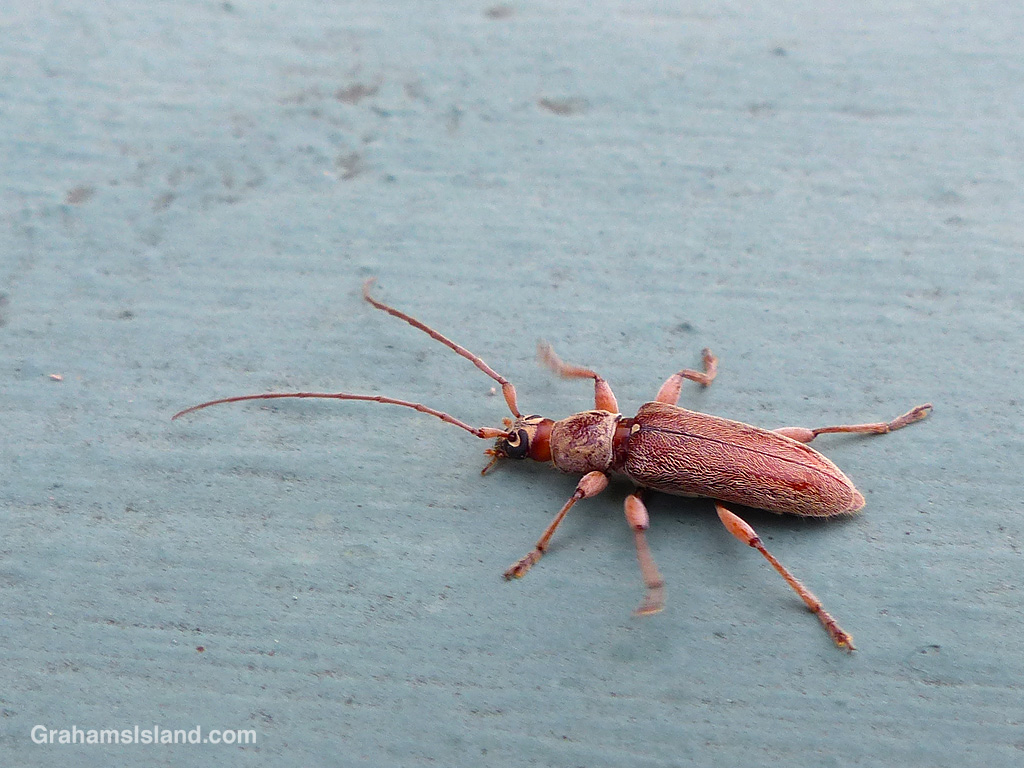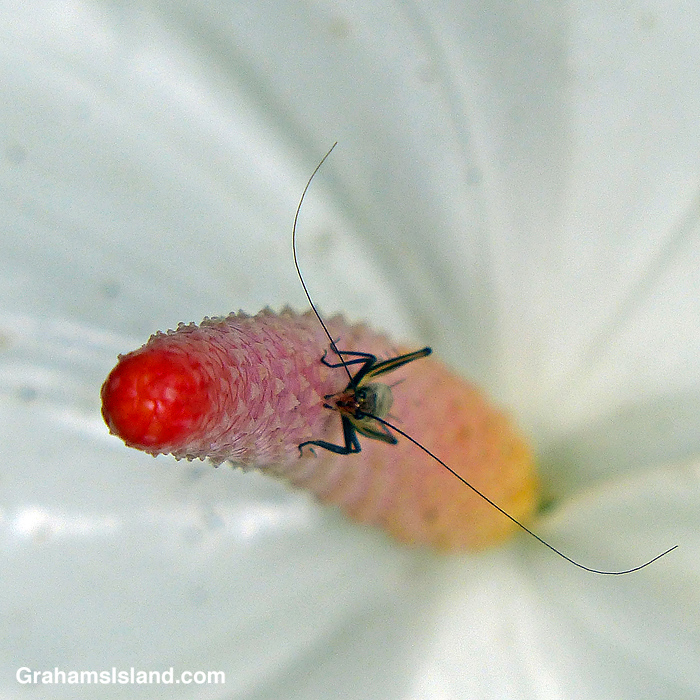
I saw this beetle on a tree I was cutting up. It was shiny, which always gets my attention. It’s a metallic wood-boring beetle, and this one is relatively plain compared to some of its more flamboyant relatives.


I saw this beetle on a tree I was cutting up. It was shiny, which always gets my attention. It’s a metallic wood-boring beetle, and this one is relatively plain compared to some of its more flamboyant relatives.

This week’s Sunday Stills challenge theme is ‘Comics or Funny Pages (aka silly or funny photos).’ See more responses here.
These are photos that I’ve run before, but quite a while ago. They still make me smile and I hope they do the same for you.




Geckos are endlessly entertaining.



But they’re not the only ones.


I used to see Ground Beetles all the time on my walks at Upolu, but this one was the first I’d seen in ages. I don’t think it’s because I’m becoming less observant. I think the numbers are down, for whatever reason.

Ceresium unicolor is a longhorn beetle that, apparently doesn’t have a common name. An introduced species, it’s not consider to be a problem in Hawaii. I found this one walking along the railing of my lanai.



This week’s Sunday Stills challenge theme is ‘Macro or Close-ups.’ See more responses here.
I saw this cricket climbing up the spadix of a white anthurium at Hawai’i Tropical Bioreserve & Garden. As it neared the top, I zoomed in for a close up. I haven’t been able to find out what kind of cricket it is (open to suggestions), but I was very taken by its extravagantly long antennae.
For more information about Hawai’i Tropical Bioreserve & Garden, go to htbg.com.
Updated 9-17-2022: Thanks to Forest and Kim Starr at Hawaii Insect ID for pointing out this is probably a cricket, though exactly which kind remains unknown.

This week’s Sunday Stills challenge theme is ‘A Numbers Game.’ See more responses here. I put all my fingers and thumbs to work for my response, starting with ten Sheep in formation (and ten Cattle Egrets, too, as a bonus).
Next we have nine Spinner Dolphins playing, eight Wild Pigs foraging, seven Cattle Egrets heading to work.



Then there’s six Dung Beetles at work, five Black Triggerfish feeling blue, four Japanese White-eyes bathing.



And finally, three Horses watching, two Hawaiian Monk Seals resting, and one Pueo anticipating zero and lifting off.




My house has been surrounded by spiders and their webs for most of the winter. One female Hawaiian Garden Spider has a web which angles across the living room window. I can follow the activities there from the comfort of the couch.
One morning, I raised the window blind and found this scene. The large, yellow-backed spider is the female. The much smaller drab, brown spider above her is the male, and when a male is seen on a female’s web there’s only one reason – he’s looking to mate with her. I’m not sure what the third character in this scene is. It might be a mango beetle, but it was securely trussed to the web.
What happened can be seen in the gallery. The male tried his mating moves, the female remained largely unmoved. Much of the time the male stayed on the relatively safe opposite side of the web to the female, but to mate he must venture to the other side. When he did, sometimes the female swung into action. Mostly, she seemed responsive, but one time the male disappeared in an instant. Then I saw him climbing back up the thread he’d dropped on. Something must have gone awry, but no harm done. Through all this activity, the beetle looked on, waving its little legs and antennae.






The presence of the beetle seemed to affect the delicate negotiations going on between the spiders. Sometimes, the male went over to the beetle and sort of prodded at it, but nothing more. In the early evening, the female lost patience. She straddled the beetle, shot out strands of threads, and rebound the beetle as she spun it with her legs. It turned like a rotisserie chicken in overdrive. I didn’t get photos of this as the light was fading.
Next morning, nothing much had changed. The female was still the central figure, the male still holding his position. The only difference is that the beetle had managed to push its legs and head through the engulfing threads and it was back to waving its little legs and antennae. Later that day, the male appeared to successfully mate with the female and escape alive. I last saw him wandering over to the next web along where he positioned himself carefully on the opposite side of the web spun by another large female.
The next day, there was still a female on the web but I think it was a different, smaller one than the one in these photos. The beetle was still there, still waving its little legs and antennae. That evening, the new female did the rotisserie chicken move on the beetle and retrussed it. Next morning, the beetle had freed its legs and head again and was waving its legs and antennae again.
The following day, only the new female spider could be seen!
Posted in response to this month’s Becky’s Squares challenge theme of ‘Odd.’ See more responses here.

A mango beetle checks out a bright orange Kou (Cordia subcordata) flower.